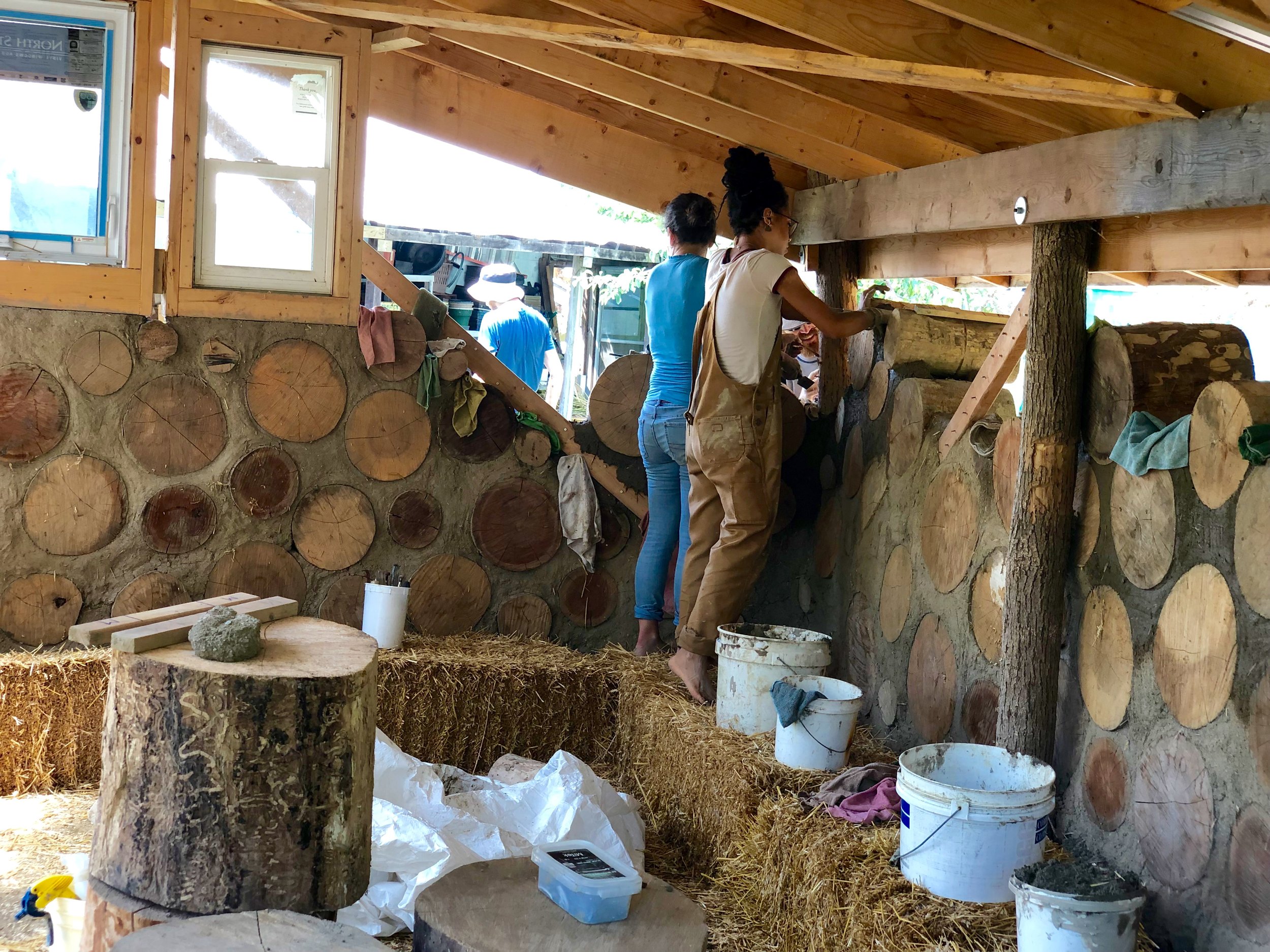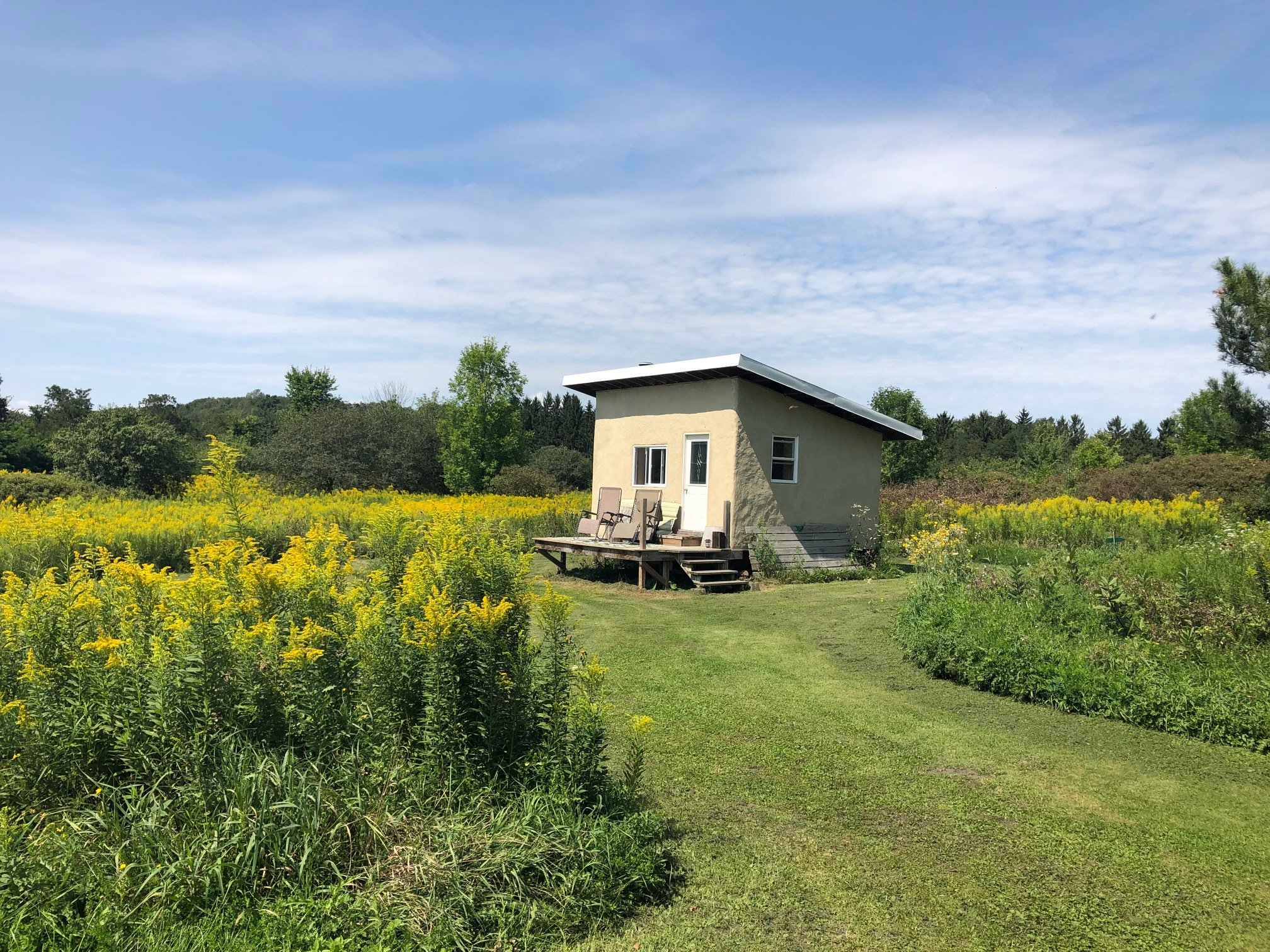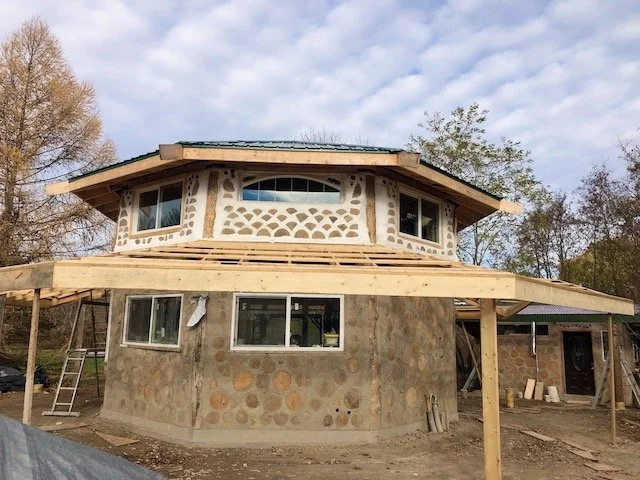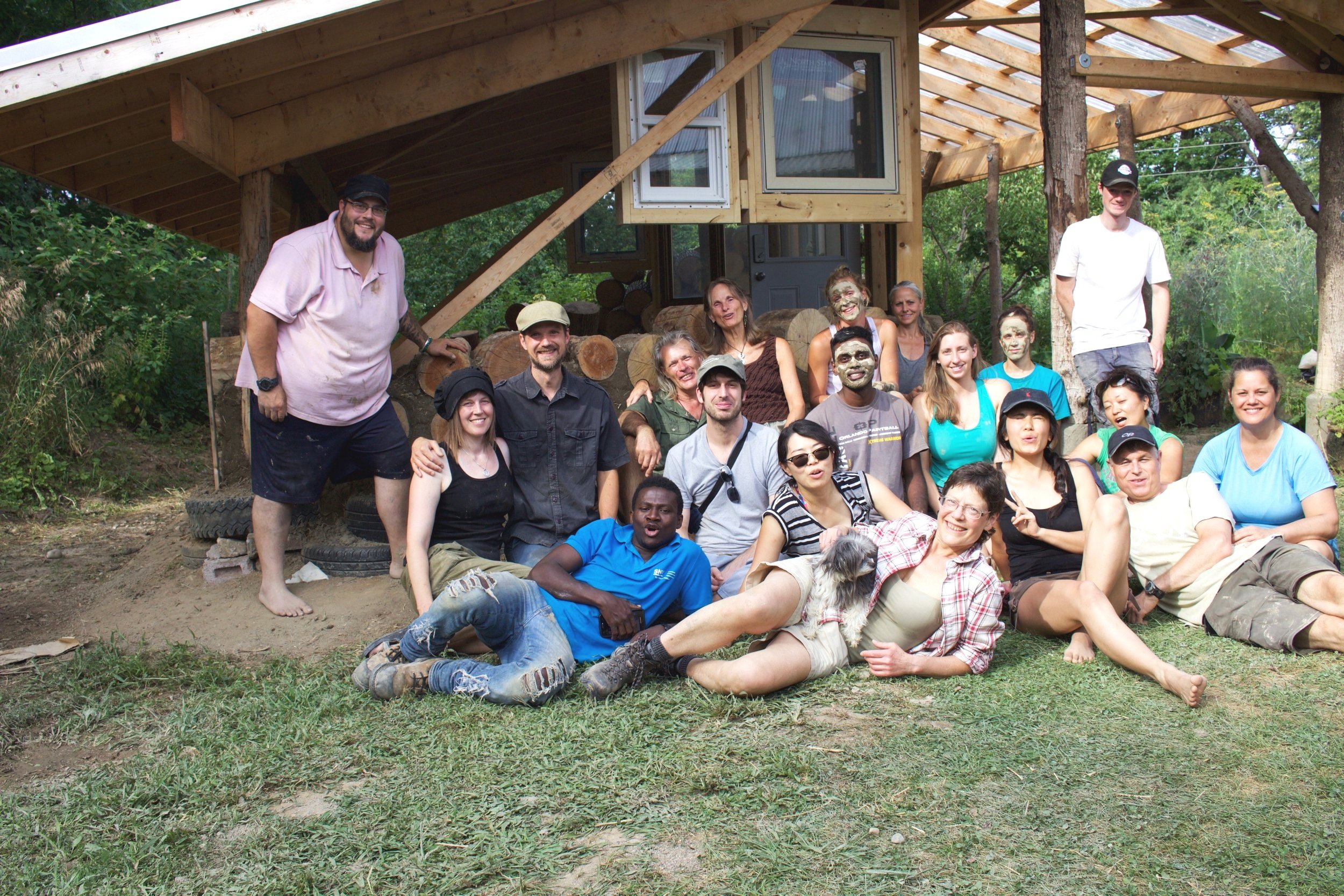
Earthly Craftsmanship Workshop
The Art of Natural Building:
NEXT SESSION TO BE ANNOUNCED
The Art of Natural Building Workshop introduces you to construction methods that honour the Earth while creating beautiful and enduring spaces. Using minimally processed, natural materials, natural building offers a holistic alternative to conventional methods. More than reducing environmental impact, this approach asks how we can design and build with the lightest ecological footprint while still ensuring durability and comfort.
In this hands-on workshop you will explore techniques and principles for working with clay, straw, wood, and other sustainable materials. Natural building often invites collaboration and community, as structures are crafted by the hands of owners, families, and friends. The process transforms building into a shared experience, connecting people to both place and each other. Participants will leave with practical skills, design inspiration, and a deeper understanding of how construction can become an act of creativity, resilience, and ecological care.

Natural Building Workshop: Crafting Sanctuary with Cob & Cordwood
Facilitators: Shantree Kacera, Lorenna Bousquet-Kacera
Overview:
This immersive workshop invites you to learn the art of natural building through hands-on practice and embodied learning. We’ll guide you through every step of creating a ‘Sanctuary/Teaching Space’ using ancient cob and cordwood techniques, blending practical skills with a deeper understanding of natural building philosophies. Through dance, play, and community connection, you’ll mix cob with your body, feel the earth between your toes, and bring walls to life with your hands.
By the end of the workshop, you’ll feel confident working with cob and cordwood and empowered to source and mix your own building materials—often straight from the land beneath your feet.
What You'll Learn:
Practical Skills:
Mixing Cob: Craft ideal cob blends using site-sourced materials.
Cob Construction: Build sturdy, beautiful cob walls.
Cordwood Techniques: Select and integrate cordwood into natural walls.
Structural Integration: Add doors, windows, and unique design elements.
Integrated Learning:
Natural Building Methods: Understand when and how to use different techniques.
The History & Versatility of Cob: From building to crafting ovens and sculptures.
Structural Systems: Explore natural walls, roofs, floors, and foundations.
Heating & Cooling: Learn about passive solar design and thermal inertia.
Water Systems: Create sustainable water solutions for natural structures.
About Cob & Cordwood Construction:
What is Cob?
Cob is an ancient, earthy building technique using a simple mixture of clay, sand, and straw. Unlike adobe bricks, cob is applied directly onto walls, creating soft, organic shapes and a soothing building experience. It is incredibly durable, offering versatility in construction—from homes to outdoor ovens and rocket-mass heaters.
What is Cordwood?
Cordwood construction, also known as stack wall building, uses cut logs like bricks, with cob (or another mortar) holding them together. This method offers a unique aesthetic and reduces the need for clay and sand by utilizing readily available wood.
Who is This Workshop For?
This workshop is perfect for:
Anyone dreaming of building a natural home or structure.
Those wanting to deepen their physical and mental understanding of cob and cordwood techniques.
Builders and dreamers eager to create with nature’s gifts.
Whether you’re a novice or have some building experience, you’ll leave with the skills and confidence to begin your own natural building projects.











Meet your instructors
Shantree & Lorenna
Shantree Kacera, a renowned author and educator, is a leading figure in natural medicine, ecology, and permaculture. His invaluable contributions to wholistic health, herbalism, wild nutrition, ecology, forest gardening, and regeneration make him a widely recognized expert.
Lorenna Bousquet-Kacera is a highly knowledgeable and experienced educator specializing in Shamanu Earth Wisdom Teachings, WomanEarh and permaculture. Lorenna's teachings inspire individuals to adopt a more conscious and holistic approach to their well-being, recognizing the importance of nurturing themselves and the planet.
Their unparalleled expertise and unbridled passion for the past 50-years each have significantly contributed to promoting regenerative living practices. . LEARN MORE
Testimonials



